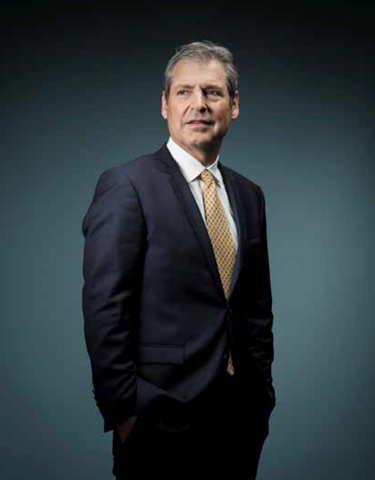Discoveries
Innovation 3: The Mundane and the Fantastic
Aug 10, 2018 Jeremy Deutchman
Mark Vrahas, MD, Chair of Cedars-Sinai Orthopaedics, on Hips, Slips, and the Limits of Medical Innovation

Photo: Max Gerber
Discoveries: People are constantly on the lookout for the next “big thing.” Is innovation always for the good?
Mark Vrahas: In medicine, we always strive to do better. Sometimes what you want is not the latest and greatest but the tried and true. Take modern total hip replacement, which was invented about 60 years ago, and in older people it proved successful in 80 to 90 percent of cases. Naturally, people rushed in to create even better versions. Instead, they turned out failure after failure. The new joint implants lasted five, maybe 10 years, while the originals were still going strong after 25 years.
Discoveries: So new products aren’t always the best way to go?
MV: Not always. This doesn’t mean we should try to squelch the impulse to innovate. But it does reflect a certain short-sightedness: If most people had received the original implants while new designs were being tested, they may have had better outcomes.
Discoveries: What about new techniques? Are there clearer benefits to innovation?
MV: Sometimes. I am a great believer in innovation but, just as with new technology, we have to evaluate our innovations with clear eyes. Sometimes innovations lead to much better care, other times they make care worse, and sometimes they provide only marginal benefit in the right surgeon’s hands. The best approach is always the one your surgeon is most comfortable with. Recently, the “anterior” approach became very popular for hip surgery. It is a good approach in the hands of a surgeon who has mastered it, but not better than others. Suddenly everyone wanted that, and market pressure drove many surgeons to abandon tried-and-true techniques without mastering the new one. We saw many complications that would not have occurred had surgeons stuck with what they knew.
Discoveries: What orthopaedic innovations are on the horizon?
MV: We are naturally attracted to the fantastic. We are excited by the promise of stem cells and regenerative medicine. We want to replace damaged tissue with new organs grown in the lab. Our Orthopaedics Department scientists are using gene and cell therapy techniques to regrow bone and repair degenerated tissues around the spine. Hopefully, in the next 10 years, we will be able to repair cartilage, bone, and muscle. Personally, I am also attracted to the mundane. Many important innovations are less glamorous but much more accessible in the short run. For example, most people know that hip fractures are common in the elderly. What they don’t know, until it affects someone in their family, is how devastating this injury can be. Our societal systems for preventing and managing these injuries is disjointed. I think the most important innovations on the horizon will be those that help us better understand our patients and what they want and need, and help us coordinate how we provide care. The most important innovation will improve the patient experience and promote health instead of simply curing disease.
Vrahas is the Levin/ Gordon Distinguished Chair in Orthopaedics in honor of Myles Cohen, MD.
More Innovations to Transform Medicine in the Next Decade
- Innovation 1: The Digital Doctor
- Innovation 2: Cancer Cures in a Dish
- Innovation 4: The Smart Hospital Room
- Innovation 5: Genetic Testing for All
- Innovation 6: Broader Diagnosis
- Innovation 7: A Very Patient Device
- Innovation 8: Pro Solutions to Antibiotics Problems
- Innovation 9: (Out on) a Better Limb
- Innovation 10: The XR Files
- From Idea to Innovation
- A Short List of Failed Innovations


